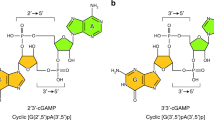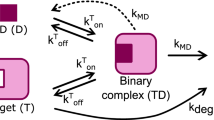Abstract
CD39 (NTPDase1—nucleoside triphosphate diphosphohydrolase 1) is a membrane-tethered ectonucleotidase that hydrolyzes extracellular ATP to ADP and ADP to AMP. This enzyme is expressed in a variety of cell types and tissues and has broadly been recognized within vascular tissue to have a protective role in converting “danger” ligands (ATP) into neutral ligands (AMP). In this study, we investigate the enzyme kinetics of CD39 using a Michaelis–Menten modeling framework. We show how the unique situation of having a reaction product also serving as a substrate (ADP) complicates the determination of the governing kinetic parameters. Model simulations using values for the kinetic parameters reported in the literature do not align with corresponding time-series data. This dissonance is explained by CD39 kinetic parameters previously being determined by graphical/linearization methods, which have been shown to distort the underlying error structure and lead to inaccurate parameter estimates. Modern methods of estimating these kinetic parameters using nonlinear least squares are still challenging due to unidentifiable parameter interactions. We propose a workflow to accurately determine these parameters by isolating the ADPase and ATPase reactions and estimating the respective ADPase parameters and ATPase parameters with independent data sets. Theoretically, this ensures all kinetic parameters are identifiable and reliable for future prospective model simulations involving CD39. These kinds of mathematical models can be used to understand how circulating purinergic nucleotides affect disease etiology and potentially inform the development of corresponding therapies.









Similar content being viewed by others
Data availability
Matlab code used for modeling and analysis can be found at the github repository: https://github.com/AndrewDMarquis/CD39-Enzyme-Kinetics
References
Zhao H, Bo C, Kang Y, Li H (2017) What else can CD39 tell us? Front Immunol 8(JUN):727
LeBel D, Poirier GG, Phaneuf S, St-Jean P, Laliberté JF, Beaudoin AR (1980) Characterization and purification of a calcium-sensitive ATP diphosphohydrolase from pig pancreas. J Biol Chem 255(3):1227–1233
Laliberté JF, St-Jean P, Beaudoin AR (1982) Kinetic effects of Ca2+ and Mg2+ on ATP hydrolysis by the purified ATP diphosphohydrolase. J Biol Chem 257(7):3869–3874
Laliberte JF, Beaudoin AR (1983) Sequential hydrolysis of the γ- and β-phosphate groups of ATP by the ATP diphosphohydrolase from pig pancreas. Biochim et Biophys Acta (BBA)-Protein Struct Mol Enzymol 742(1):9–15
Antonioli L, Pacher P, Vizi ES, Haskó G (2013) CD39 and CD73 in immunity and inflammation. Trends Mol Med 19(6):355–367
Sevigny J, Cote YP, Beaudoin AR. Purification of pancreas type-I ATP diphosphohydrolase and identification by affinity labelling with the 5′-p-fluorosulphonylbenzoyladenosine ATP analogue. Biochemical Journal [Internet]. 1995 Dec 1 [cited 2023 Mar 24];312(2):351–6. Available from: /biochemj/article/312/2/351/32127/Purification-of-pancreas-type-I-ATP
Sutton NR, Bouïs D, Mann KM, Rashid IM, McCubbrey AL, Hyman MC, et al. CD73 promotes age-dependent accretion of atherosclerosis. Arterioscler Thromb Vasc Biol [Internet]. 2020 [cited 2022 May 31];40(1):61–71. Available from: https://www-ahajournals-org.proxy.lib.umich.edu/doi/abs/10.1161/ATVBAHA.119.313002
Sévigny J, Sundberg C, Braun N, Guckelberger O, Csizmadia E, Qawi I, et al. Differential catalytic properties and vascular topography of murine nucleoside triphosphate diphosphohydrolase 1 (NTPDase1) and NTPDase2 have implications for thromboregulation. Blood [Internet]. 2002 Apr 15 [cited 2023 Mar 24];99(8):2801–9. Available from: https://ashpublications-org.proxy.lib.umich.edu/blood/article/99/8/2801/89112/Differential-catalytic-properties-and-vascular
Sutton NR, Hayasaki T, Hyman MC, Anyanwu AC, Liao H, Petrovic-Djergovic D, et al. Ectonucleotidase CD39-driven control of postinfarction myocardial repair and rupture. JCI Insight [Internet]. 2017 Jan 1 [cited 2022 Aug 28];2(1). Available from: /pmc/articles/PMC5213916/
Kukulski F, Lévesque SA, Lavoie ÉG, Lecka J, Bigonnesse F, Knowles AF, et al. Comparative hydrolysis of P2 receptor agonists by NTPDases 1, 2, 3 and 8. Purinergic Signal [Internet]. 2005 Jun 17 [cited 2022 May 30];1(2):193–204. Available from: https://link-springer-com.proxy.lib.umich.edu/article/10.1007/s11302-005-6217-x
Perrin CL. Linear or nonlinear least-squares analysis of kinetic data? J Chem Educ [Internet]. 2017 Jun 13 [cited 2022 May 31];94(6):669–72. Available from: https://pubs-acs-org.proxy.lib.umich.edu/doi/full/https://doi.org/10.1021/acs.jchemed.6b00629
Goudar CT, Sonnad JR, Duggleby RG (1999) Parameter estimation using a direct solution of the integrated Michaelis-Menten equation. Biochim et Biophys Acta (BBA) - Protein Struct Mol Enzymol 1429(2):377–83
Perrin CL. Linear or nonlinear least-squares analysis of kinetic data? J Chem Educ [Internet]. 2017 Jun 13 [cited 2022 Jun 5];94(6):669–72. Available from: https://pubs-acs-org.proxy.lib.umich.edu/doi/full/10.1021/acs.jchemed.6b00629
Chou TC, Talalay P (1977) A simple generalized equation for the analysis of multiple inhibitions of Michaelis-Menten kinetic systems. J Biol Chem 252(18):6438–6442
Wilamowski BM, Yu H (2010) Improved computation for levenbergmarquardt training. IEEE Trans Neural Netw 21(6):930–937
Marquis AD, Arnold A, Dean-Bernhoft C, Carlson BE, Olufsen MS (2018) Practical identifiability and uncertainty quantification of a pulsatile cardiovascular model. Math Biosci 304
Dowd JE, Riggs D (1965) 5. A comparison of estimates of Michaelis-Menten kinetic constants from various linear transformations. J Biol Chem 240(2)
Freund RJ, Wilson WJ, Sa P (2006) Regression analysis. Elsevier
Ottesen JT, Mehlsen J, Olufsen MS (2014) Structural correlation method for model reduction and practical estimation of patient specific parameters illustrated on heart rate regulation. Math Biosci 1(257):50–59
Ellwein LM, Pope SR, Xie A, Batzel JJ, Kelley CT, Olufsen MS (2013) Patient-specific modeling of cardiovascular and respiratory dynamics during hypercapnia. Math Biosci 241(1):56–74
Hofstee BHJ. Non-inverted versus inverted plots in enzyme kinetics. Nature 1959 184:4695 [Internet]. 1959 [cited 2022 Jun 5];184(4695):1296–8. Available from: https://www-nature-com.proxy.lib.umich.edu/articles/1841296b0
Johnson KA (2013) A century of enzyme kinetic analysis, 1913 to 2013. FEBS Lett 587(17):2753–2766
Aledo JC, Juan Aledo CC. Enzyme kinetic parameters estimation: a tricky task? Biochemistry and Molecular Biology Education [Internet]. 2021 Jul 1 [cited 2022 Aug 28];49(4):633–8. Available from: https://onlinelibrary-wiley-com.proxy.lib.umich.edu/doi/full/10.1002/bmb.21522
Lineweaver H, Burk D. The determination of enzyme dissociation constants. J Am Chem Soc [Internet]. 1934 Mar 1 [cited 2022 Aug 29];56(3):658–66. Available from: https://pubs.acs.org/doi/pdf/10.1021/ja01318a036
Reali F, Priami C, Marchetti L (2017) Optimization algorithms for computational systems biology. Front Appl Math Stat 11(3):6
Ipsen ICF, Kelley CT, Pope SR (2011) Rank-deficient nonlinear least squares problems and subset selection. SIAM J Numer Anal 49(3):1244–1266
Mahdi A, Meshkat N, Sullivant S. Structural identifiability of viscoelastic mechanical systems. PLoS One [Internet]. 2014 Feb 11 [cited 2022 Jun 9];9(2):e86411. Available from: https://journals.plos.org/plosone/article?id=10.1371/journal.pone.0086411
Michaelis VL, Maud Menten ML, Goody RS, Johnson KA. (1890) 57, 834. 6 A. J. Brown. J Chem Soc. 1902;
Hanson SM, Schnell S. Reactant stationary approximation in enzyme kinetics. Journal of Physical Chemistry A [Internet]. 2008 Sep 18 [cited 2022 Jun 19];112(37):8654–8. Available from: https://pubs.acs.org/doi/pdf/10.1021/jp8026226
Schnell S, Mendoza C (1997) Closed form solution for time-dependent enzyme kinetics. J Theor Biol 187(2):207–212
Schnell S, Mendoza C (2000) Time-dependent closed form solutions for fully competitive enzyme reactions. Bull Math Biol 62(2):321–336
Schnell S, Mendoza C (2000) Enzyme kinetics of multiple alternative substrates. J Math Chem 27:155–170
Jin J, Kunapuli SP. Coactivation of two different G protein-coupled receptors is essential for ADP-induced platelet aggregation. Proceedings of the National Academy of Sciences [Internet]. 1998 Jul 7 [cited 2023 Mar 24];95(14):8070–4. Available from: https://www-pnas-org.proxy.lib.umich.edu/doi/abs/10.1073/pnas.95.14.8070
Funding
This study was supported by National Institutes of Health grant no. K76 AG064426 (awarded to NRS) and the University of Michigan Undergraduate Research Opportunity Program. The funders had no role in study design, data collection and analysis, decision to publish, or preparation of the manuscript.
Author information
Authors and Affiliations
Contributions
ADM (Marquis) and NS conceived of the presented study. AM (McGuinness), AT, and ADM derived the mathematical model, carried out the computer simulations, and analyzed and interpreted the results. AM and AT took the lead in the original drafting of the manuscript. All figures and tables were prepared by AM, AT, and ADM. ADM and NS provided critical feedback and helped shape the research, analysis, and final manuscript. All authors reviewed and approved of the manuscript.
Corresponding author
Ethics declarations
Ethical approval
Not applicable.
Competing interests
The authors declare no competing interests.
Additional information
Publisher's note
Springer Nature remains neutral with regard to jurisdictional claims in published maps and institutional affiliations.
AM and AT are joint first authors.
Appendix
Appendix
Time-varying sensitivities
The time-varying sensitivities are used to calculate the ranked sensitivities for each model state: ATP, ADP, and AMP. These are used to calculate the correlation matrix, which contains the pairwise correlations between the parameters. \({K}_{M1}\), \({K}_{M2}\), \({v}_{\mathrm{max}1}\), and \({v}_{\mathrm{max}2}\). Figure A1 shows the time varying sensitivities of both the nominal and naively estimated parameters in each of the states mentioned.
Rights and permissions
Springer Nature or its licensor (e.g. a society or other partner) holds exclusive rights to this article under a publishing agreement with the author(s) or other rightsholder(s); author self-archiving of the accepted manuscript version of this article is solely governed by the terms of such publishing agreement and applicable law.
About this article
Cite this article
McGuinness, A. ., Tahir, A., Sutton, N.R. et al. Identifiability of enzyme kinetic parameters in substrate competition: a case study of CD39/NTPDase1. Purinergic Signalling (2023). https://doi.org/10.1007/s11302-023-09942-1
Received:
Accepted:
Published:
DOI: https://doi.org/10.1007/s11302-023-09942-1





